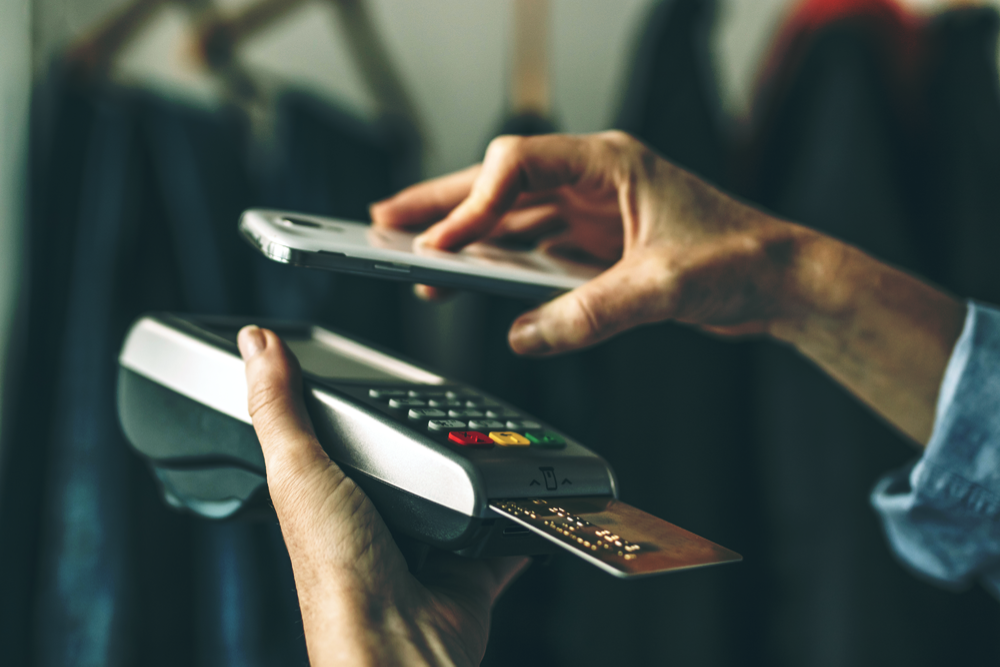Retail potential in the digital wallet

Australian consumers are making the transition from physical to digital wallets, offering retailers a wealth of opportunity to cash in on the changing tide.
According to Deloitte adoption of mobile payment technology rose 14% in 2017 alone seeing Australians steadily abandon their cards and instead look to mobile payments via digital wallets.
The shift offers the chance for retail to enhance the customer experience through loyalty cards, greater payment options and a more detailed insight into consumer behaviour.
Here’s an insight into digital wallet adoption and the retail potential it offers.
How does the average Australian pay?
Australia has long been a proponent of cashless transactions, with a report by CapGemini finding this trend had further increased by 10% in 2017, up from 8.9% in 2016. It sees Australia rank fourth globally behind the US, South Korea and Denmark.
Meanwhile, digital wallets are further enhancing this trend. Deloitte found mobile payments using smart phones increased 14% last year with over a quarter of their survey respondents now using them.
These statistics were supported by recent Roy Morgan research which noted 7.3% of Australians had used a bank’s mobile app to make a payment in the past 12 months, while 6.1% had used digital wallet service like Apple Pay, Samsung Pay, Android Pay or Google Payments.
The digital wallet
At its simplest, the digital wallet sees the physical wallet replicated on a user’s smart phone. It offers the ability for users to load their debit and credit card details to an app. They can then make contactless payments by simply holding their phone near an EFTPOS terminal and authorising the transaction via fingerprint, PIN or even facial recognition.
Just like the physical wallet, the digital wallet also offers the opportunity to accommodate retail loyalty and gift cards, as the Australian Retailers Association explains:
“Over the next three to five years, the humble wallet will be completely replaced by smartphones that can house loyalty cards, identification documents, driver’s licenses, payment cards and even medical records.
“With plastic loyalty cards taking up about half the space in a typical average-sized wallet, offering consumers convenience in storing and managing their loyalty cards in one place…is key to winning them over.”
So, what’s in it for retailers?

Customer convenience
As customer adoption of digital wallets continues to rise, retail consumers will come to expect the convenience of a payment method which allows them to simply wave their smart phone in front of an EFTPOS terminal to pay.
As a recent report into contactless payments by the University of Canberra noted: “In merchant segments where speed and convenience are key to merchandising and customer service, contactless payments also translate into improved customer acquisition and retention. Merchants also benefit from higher sales and customer satisfaction.”
Meanwhile it offers a range of operational benefits.
Retailer efficiencies
The consumer isn’t the only one benefitting from the speed and efficiency of the digital wallet. There are also practical drawcards for the retailer too.
“The primary benefits include lower costs (as a result of fewer requirements to handle cash), improved operational efficiencies, and reduced maintenance required by contactless readers,” the University of Canberra stated.
“The cost for a merchant for a contactless payment is $0.11 per transaction versus $0.20 for a contact transaction. Additionally, the time taken for a transaction to take place, with a contactless payment average of 20 seconds versus 38 seconds for a contact payment.
“As a two-second change in tender time implies a one cent ($0.01) change in merchant costs, small efficiency gains or delays can make a large difference to the total resource cost of the transaction and to a merchant’s bottom line.”
Meanwhile, general wear and tear on EFTPOS machines is also greatly reduced by going contactless, thus minimising the number of times a machine has to be repaired or replaced.
Magnetic head and chip card readers involve interacting with the device in a way that “wears” the product out and causes eventual failure, or creates an avenue for it to fail quickly.
For example, the laminate from older credit cards can peel off and become stuck in the chip card reader causing the next card to fail to insert properly.
Contactless payments have no such issues or similar points of failure. The more units are used for contactless, the less the other two parts are used and the less they wear/fail.
It’s not just the process of returning the machine either, but when a card reader is taken out of circulation valuable time is lost due at the POS.
Rewards and loyalty cards
According to Nielsen’s Global Loyalty Sentiment study 57% of Australian consumers are more likely to return to a retailer if they have a loyalty program in place, and 48% will spend more if they know they’re going to be rewarded.
The digital wallet featuring incorporated loyalty cards is a simplified way of embracing this trend, with the Neilson report further finding 69% of loyalty-program members agreed they’re more likely to participate in a loyalty program if a mobile app is available.
A case in point
Over the past year supermarket giant Woolworths has steadily been embracing the digital wallet, offering consumers the chance to earn points on their digital rewards card and when using Google Pay.
It’s a prime example of how retailers can improve the customer experience by making payments and loyalty seamless.
“We’re seeing digital wallets growing in popularity because they offer quick, seamless and hassle-free payments for customers,” Woolworths Loyalty Director Ingrid Maes told Canstar Blue.
“As more and more Australians embrace digital wallets, we want to make it easier to earn points and redeem Woolworths Rewards dollars in our stores no matter what device they’re on.”
The consumer in the palm of their hand
The increased uptake of loyalty programs also furnishes retailers with a wealth of data about consumer spending habits which can be used to further improve the retail experience.
“While a large membership may not necessarily mean a loyalty program is effective, well executed loyalty programs are a great way for retailers to collect and interpret data to better understand their customers,” the Australian Retailers Association said.
“Increasingly, digital loyalty programs are revolutionising the retail landscape – by combining advanced analytics, personalisation of data, as well as linking mobile and in-store shopping experiences, retailers can generate engagement driving business results.”